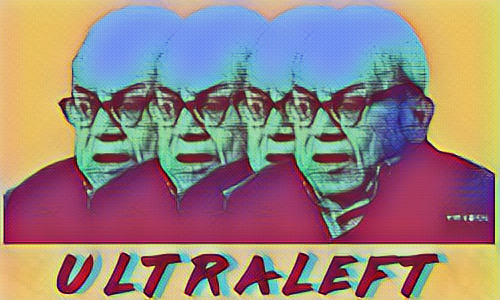Energy Democracy
How can we envision the merger of energy democracy, direct technocracy, cybernetics, and crypto?
We start with an analysis of Allende’s Chile and Stafford Beer’s Project Cybersyn. Stafford Beer’s perspective of cybernetics was instead of the abstract dichotomy of centralization versus decentralization, he asked: What is the maximum degree of decentralization that still permits the system to flourish?
Paul Cockshott who has written extensively on the possibility of post-capitalist planning aided by contemporary processing power, is a big admirer of Cybersyn: “The big advance with Stafford Beer’s experiments with Cybersyn was that it was designed to be a real-time system.” Allende pushed Beer further to expand Cybersyn’s “decentralizing, worker-participative, and anti-bureaucratic” possibilities.
Public sector operations that were near to each other work together are “cordónes industriales” - literally “industrial belts” - in order to coordinate the flow of raw materials and manufactured products. The cordónes in turn worked with local community organizations, such as mothers’ groups, to assist with distribution. These are the “co-madres.”
The autonomous operation of these cordónes mirrors forms of spontaneous worker and community self-direction that appear to pop up regularly during times of revolutionary upheaval, or otherwise at times of crisis or natural disaster, whether we call them “councils,” “comités d’enterprises” (France), “soviets” (Russia), “szovjeteket” (Hungary), or “shorai” (Iran).
What Paul Cockshott would call economic “juries” would rise as the organizational organs of a radical democratic society based on the Athenian model of direct democracy. This direct technocracy would be composed of an inverse pyramid of bottom up peoples’ committees. Each of which would be of selective expertise for its particular industry or economic sector. The workers who serve on these juries would be chosen by lottery which would be an exercise in civic duty.
It is no wonder that a long lived stream of libertarian socialist thought, running from the writings of the likes of Rosa Luxembourg, Anton Pannekoek, and Paul Mattick emphasizes such organization, such “councils” as the foundation of the free society they wish to build. The great challenge is scaling up of such democratic, market-less organization. This is the distilled version of the economic calculation debate: relatively flat hierarchies seem perfectly capable of democratically coordinating production and distribution.
The reality of Chileans directing a technology rather than the other way round should assuage potential concerns that our hypothesis- that contemporary processing power and telecommunications networks can work to overcome the economic calculation challenge- is a technocratic solution: that we are arguing that we offload the responsibility for constructing the democratic, marketless society to an algorithm. This gets it absolutely backwards.
The result inspired Beer to envision still-wider applications of cybernetics to support worker participation. This former international business consultant had moved in almost anarchic-syndicalist direction (anarchist-syndicalism is the political philosophy arguing for a government-less society coordinated directly by workers through their trade unions).
Science and technology could be tools used by workers to help democratically coordinate society, from the bottom up, leaping over the centralization/decentralization dichotomy. Instead of having engineers and operations researchers craft the models of factories, programmers would be under the direction of workers, embedding their deep knowledge of production processes into the software.
Cybernetics here offered a new form of decentralized, adaptive control that respected individual freedom without sacrificing the collective good.
Energy democracy is ultimately in large part an extension of the laws of thermodynamics to society and the economy. It would consist in the task of eliminating injustice from society by taking control of the thermodynamics of the economy, just as engineers had succeeded in taking control of steam engines.
For the fact is that thermodynamics also teaches us that it is necessary to intervene in the operations of these machines. Otherwise they are subject to decreasing efficiency: a steam engine that produces a certain amount of work the first time will produce a little less the next time and so on, until it runs out. Marx transposed this observation, originally made by French physicist Sadi Carnot to society.
As Ludwig Boltzmann showed after Carnot, it is the result of energy that is still there, but in such a degraded form that it can no longer be useful for anything. Along the way it loses something that Marx didn’t know existed - and for good reason, since it wouldn’t be well understood until long after his death: it loses information.
So perhaps if Marx had access to the concept of information, he would have thought very differently about overcoming capitalism, and maybe he would have thought precisely in terms of money, which is never anything other than a measure of economic information.
Ultimately, crypto and “seizing the means of monetary production” is the key to energy democracy.




I feel that anyone who thinks cryptocurrency can power greater freedom or decentralization is sorely mistaken - every form of cryptocurrency can be tightly controlled, depends on "the internet" which is itself tightly controlled, and most are extremely traceable/trackable. DAOs also seem like a good idea at first but again there is irrational enthusiasm that this can empower democratic cooperation. However even if a DAO allows members to vote on expenditures, at some point the money gets paid to someone (who then can steal/misappropriate it) so it does not make misappropriation impossible. It also opens up doors to new forms of misappropriation related to stealing crypto keys or blocking internet access to certain users to prevent them from voting.
ReplyDelete